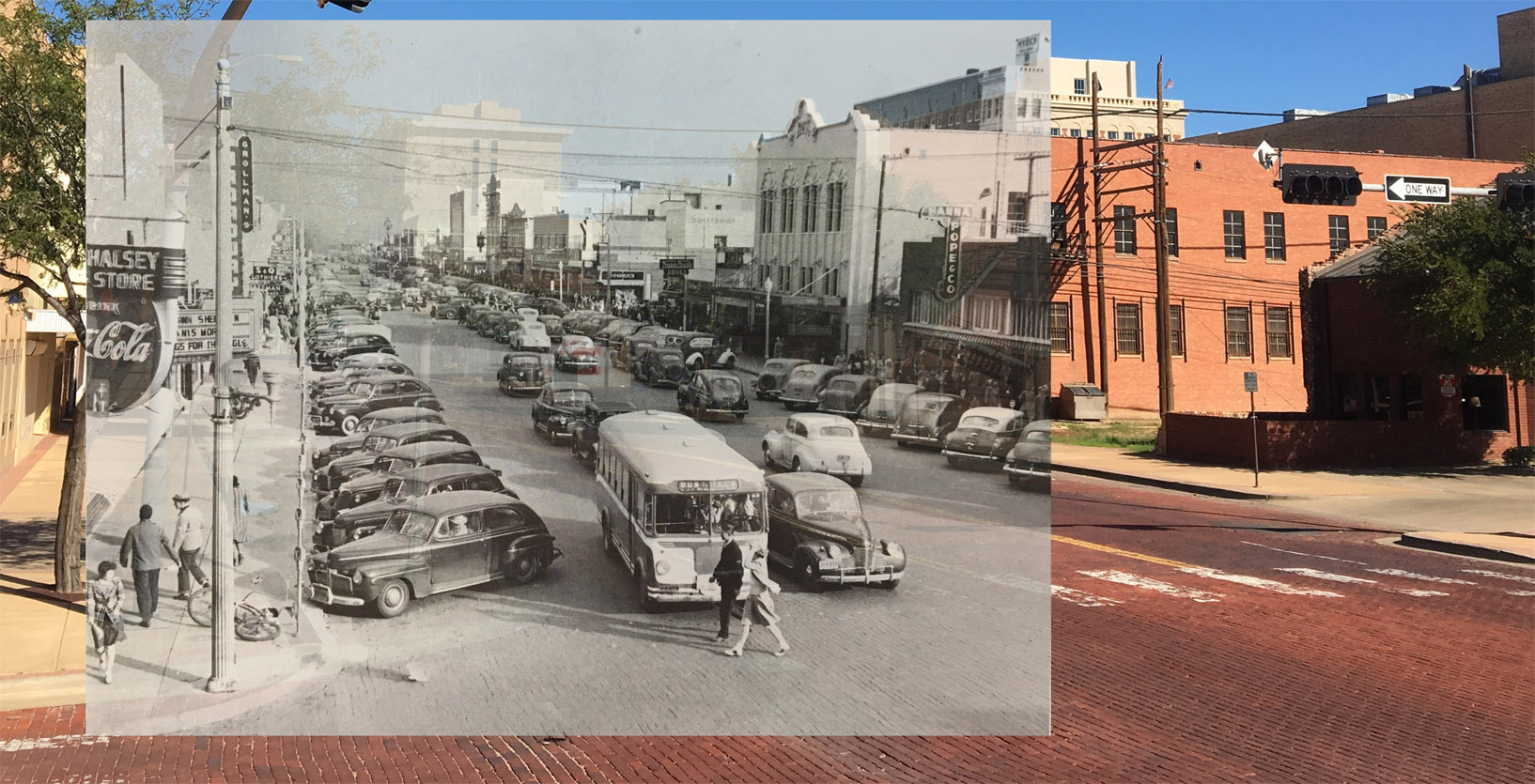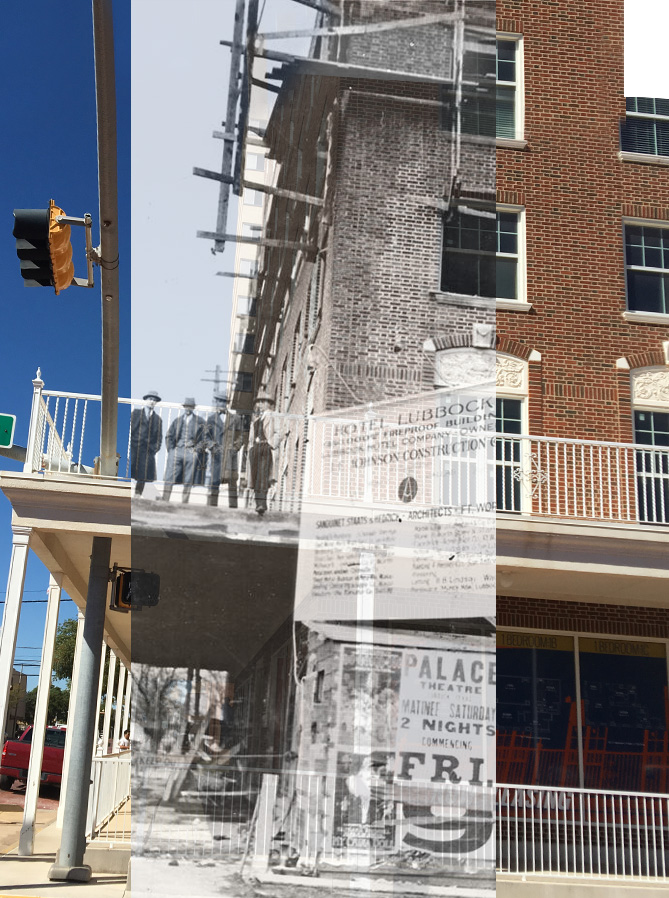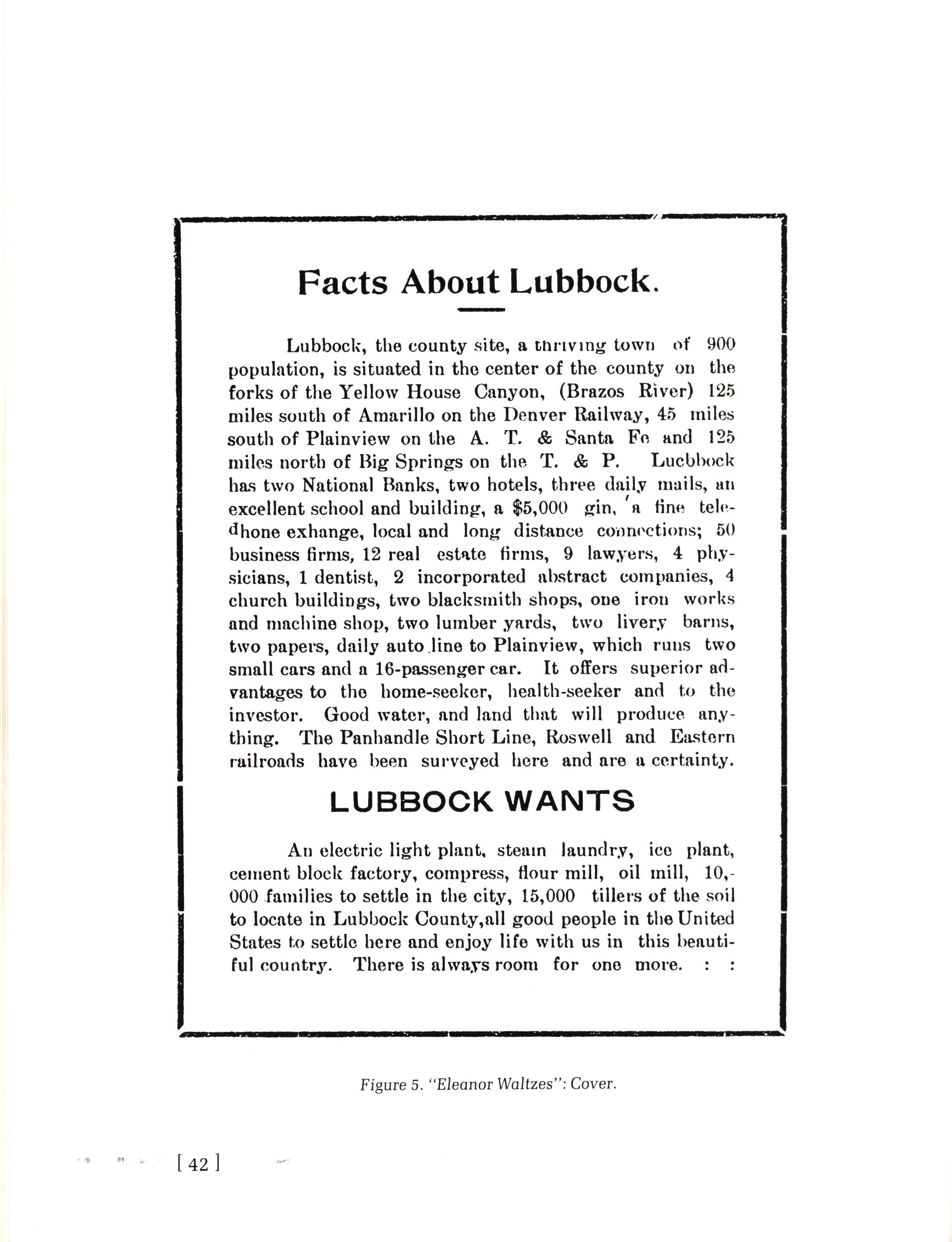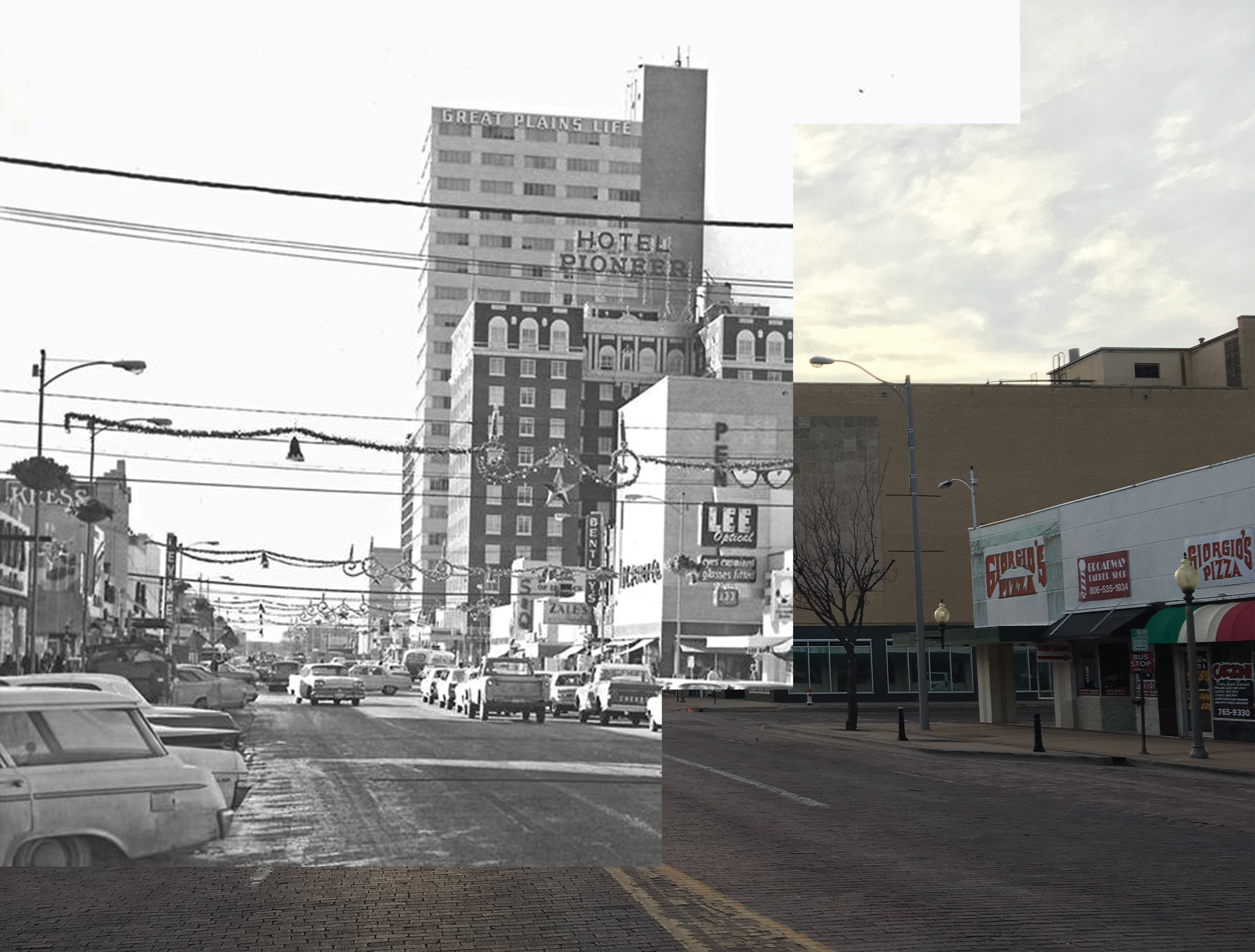Lubbock, Texas
Our downtown today is quiet with numerous abandoned buildings, echoing Lubbock’s past of commercial activity and entertainment that was blooming in the 50’s. Our exhibitions demonstrate how desolate commercial lots and buildings, viewed as uninhabitable or profitless business ventures can be reevaluated through a creative approach. These properties hold the potential to urbanize our downtown area by redeveloping them into mixed-use commercial businesses. Through the sheer implementation of the arts, our downtown can benefit from an increase presence of pedestrian activity and entertainment stimulating the overall economic growth of the area.
The downtown today is slowly restoring itself as the vibrant and progressive city that it became in the 1950s. There’s a unified vision to urbanize our downtown through new developments, and local companies and organizations engaging the local community; the idea is to bring back through integration of residential and commercial developments with public transportation, bike lanes, and appropriate ADA and historical regulations. Imagine a new urban downtown: with local grocery stores, restaurants, shops, galleries, public parks and a downtown Lubbock museum, all within walking distance of downtown living.
Majority of our downtown is composed of half-century-old structures which outdated modern building codes. Following an acquisition of downtown property, all owners run into the same dilemma—do you invest more money into restoring the building itself or do you call in the demolition crew and start from scratch? At the end of the day, there’s still a high risk in such investments since both solutions have little to no commercial competition in the area, the lack of housing, restaurants, and entertainment discourages the economic growth of the downtown affecting the small local businesses which have remained strong in the downtown area like La Feria Music store located on Broadway or Giorgio’s Pizza located on Avenue J. An example of the difficulty for someone to reopen a downtown building can be taken from our third exhibition where The Mattison Building, a 20,000 SQ. FT. commercial building located on 1401 Crickets Ave. required large sums of money to even bring the historic property up to modern day code. The building was required to relocate a second-floor exit door by two feet, a new exit staircase to be built, the removal of nearly every interior wall, and the installation of a $30,000 fire sprinkler system just to have the building deemed “usable.” Modern building codes need to be paired with local ordinances and adaptations to allow for historic districts and small startups to benefit from adaptive reuse policies.
Downtown Lubbock needs affordable housing, art galleries, music venues, additional restaurants and shops to help bring back commercial activity. The Depot District and the Arts District are the two notable districts with successful commercial activity, an example of what entertainment and the arts can bring to an area. We hope our exhibitions can grow the local arts and encourage new outlooks and opportunities for these Lubbock properties and continue the growth of the urban expansion.
2 - Project Alley 3 - The Mattison 4 - The cliffhouse 5 - Blnka Jam
























